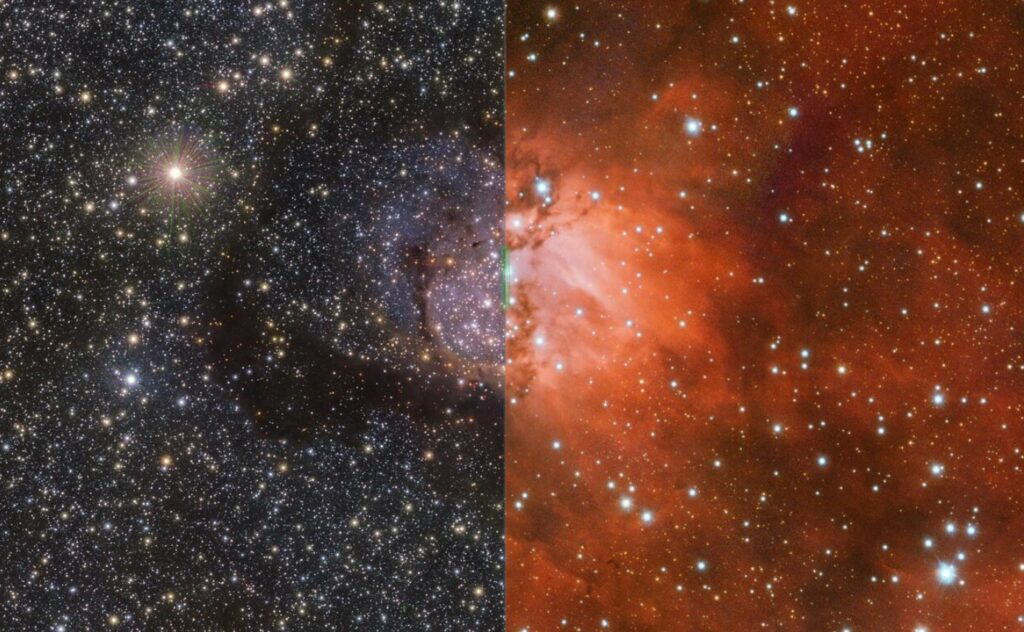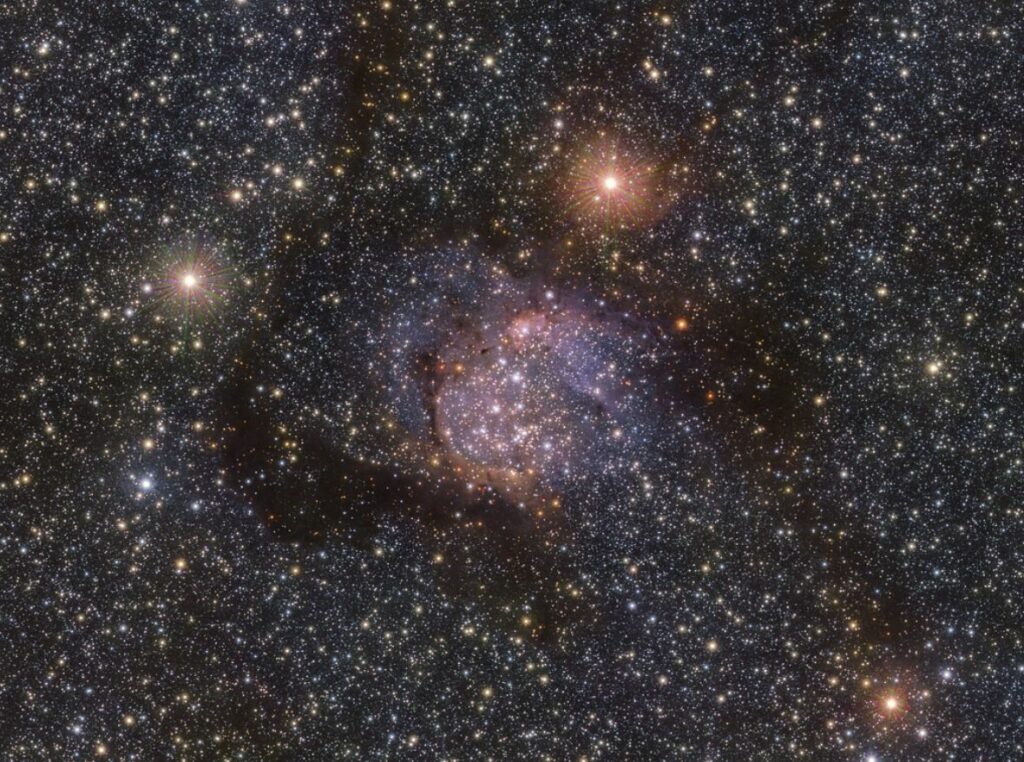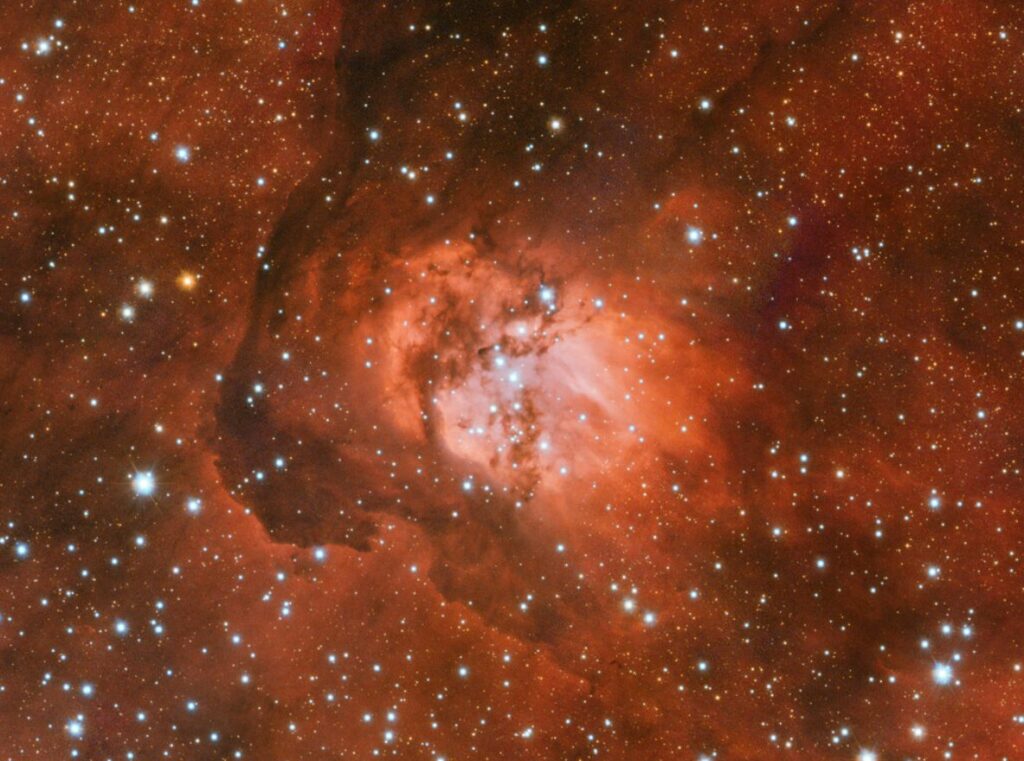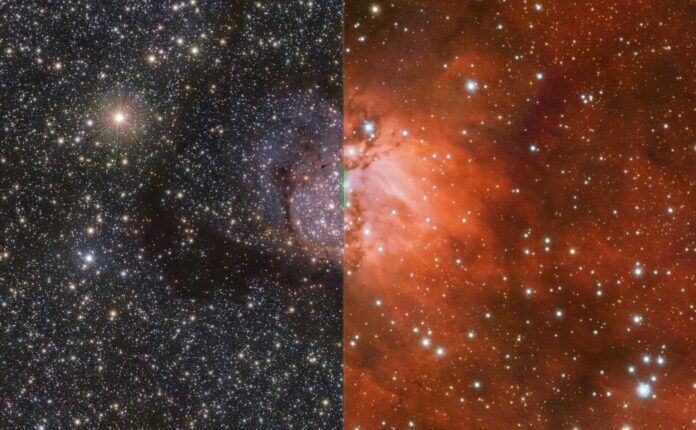This new infrared image shows a plethora of stars hidden behind the faint orange glow of the Sh2-54 nebula.
The Visible and Infrared Survey Telescope for Astronomy (VISTA), based at ESO’s Paranal Observatory in Chile, was used to capture the stunning and intricate details of this stellar nursery located in the constellation Serpens.
To the ancient people, the stars in the night sky appeared as random patterns.
Because of its similarity to a snake, the Greeks gave one of these “constellations” the name Serpens.
The ancient people would not have been able to see the stunning astronomical objects located at the tail end of this constellation.

This spectacular infrared image reveals the Sh2-54 nebula, along with the Eagle and Omega nebulae, in a new light.
Nebulae are huge clouds of gas and dust that give birth to stars. Astronomers have been able to locate and analyze these fairly faint objects in fine detail thanks to telescopes.

The official name of this nebula, which is about 6000 light-years away and shown here, is Sh2-54. The “Sh” stands for the US astronomer Steward Sharpless, who in the 1950s made a list of more than 300 nebulae.
As our tools for exploring the universe get better, so does our knowledge of these places where stars are made.
One of these developments is the ability to see light other than visible light, such as infrared light.
Just as the snake, which this nebula is named after, developed the ability to sense infrared light to learn more about its surroundings, so have we made infrared instruments to learn more about the Universe.
While dust in nebulae readily absorbs visible light, infrared light may make its way through seemingly undisturbed.
So, this picture shows that there are a lot of stars hiding behind the dust clouds.

This is helpful because it enables researchers to examine stellar nurseries in more depth, providing new insights into the process of star formation.
The sensitive 67-million-pixel camera on ESO’s VISTA telescope at Paranal Observatory in Chile was used to take this picture in infrared light.
It was collected as a part of the VISTA Variables in the Via Láctea eXtended study, or VVVX.
This multi-year effort has routinely studied a huge area of the Milky Way at infrared wavelengths, yielding crucial information for understanding star development.
Source / Image Credit: ESO/VVVX
